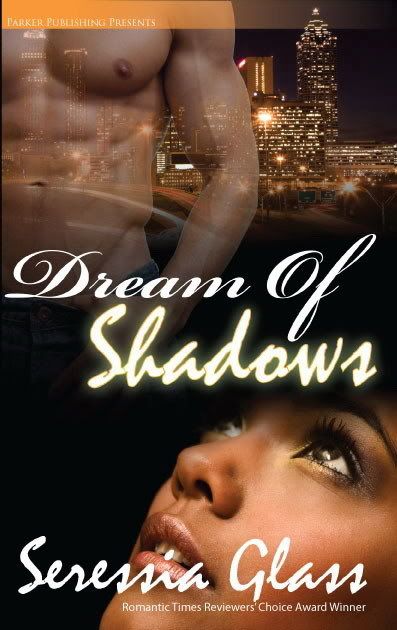Guest Blogger: Seressia Glass

(Quick note from Stacia: Apologies for the wonky photo layout, which should be better because the cover for Dream of Shadows is so gorgeous. Why Blogger has taken such a strong dislike to uploading photos for me lately I don't know. Maybe because I'm cheating on it with Livejournal?)
When Stacia asked me to do a guest blog over here, my first thought was, "Does she know what she's stepping into?" It's not that I'm controversial or confrontational. At least, I didn't start out that way. That's until I realized that there are two romance novel worlds: the world of white heroines, and the world of The Others.
It took a long time to come to this realization. Ten years ago I joined my local and national romance writing organizations, eager to learn. I wrote my first book, an interracial romance, and entered it into the Golden Heart. I should have known that the range--one 3, the rest way higher—was an indication of things to come. (Funny how a decade later, I remember that.)
I sold to a small black publisher. (Probably the first mistake, not waiting for a bigger "white" publisher.) I eagerly awaited its release. I thrilled over the "Top Pick" review from Romantic Times, totally ignoring that it was in the multicultural review section. On the release date, I eagerly went into my local Borders' romance section, looking for my book.
It wasn't there.
That was the start of my realization that black romances are perceived as different than white romances. They are shelved differently. They are reviewed differently. They have smaller print runs. As far as some readers are concerned, they are as diametrically opposed to mainstream (white) romance novels as inspirational and erotic romance. In fact, more than one reader has told me that they "can't relate" to black heroines. And yet, readers are scarfing down vampire hunters, Regency misses, and Indian princesses like there's no tomorrow.
Unfortunately, marketing and shelf placement perpetuate this stereotype, because romances written by black authors are invariably shelved in the African-American fiction section, intermixed with classics, mysteries, street lit, and other genres written by black writers. This "literary segregation" makes black readers feel special while alienating mainstream (white) readers. The same readers who will then go scarf down romances written by white authors featuring black protagonists, because those books are shelved in among the other romances.
Of course, not every retailer practices literary segregation, thank goodness. And I'd be lying if I said there were no benefits from separate shelving. Readers more likely to read me are already in the section. (They usually are browsing longer because they have to shop both areas--if you think black readers don't read white romance, you're deluded.) And thanks to online stores, reader blogs, and old-fashioned WoM, there are readers willing to cross the color line for the sake of a well-told story.
So what is the answer? I think we need to start with agreeing on the question. Is separate shelving a good thing, or a bad thing? There are those who say it isn't discriminatory. Others say it's just business--no harm, no foul. Some black writers prefer the separation because they feel it gives them more sales. Me, I'd just like to make a living wage from my writing. And for that I need readers, the more the better.
Seressia Glass is an award-winning author of contemporary and paranormal romances. Her newest releases are Channeling Moonlight in the Vegas Bites Back novella and Sex on South Beach in the What White Boyz Want anthology. She can be found on the web at www.seressia.com.
Seressia, thank you so much for coming to blog with us, and for discussing such an important issue.


Comments